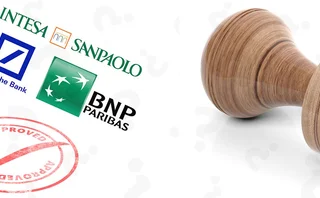
IASB amends fair-value disclosure
The International Accounting Standards Board (IASB) has amended disclosure requirements for the fair-value measurement of financial instruments, further aligning International Financial Reporting Standards (IFRS) with US Generally Accepted Accounting Principles (Gaap).
In level one - reflecting valuations in active markets - the inputs are prices quoted in the markets for identical assets or liabilities. Level two - which indicates valuation in less active markets - means the inputs can be observed in the market either directly, such as prices, or indirectly, such as derivations of prices. These inputs do not include quoted prices used within level one. Level three - which reflects illiquid markets - means unobservable inputs were used. In this latter tier, where the unobservable inputs are often generated using models, additional disclosure is required.
"The three-level hierarchy will help to increase the clarity of the information. The proposals build on the advice we have received from the IASB's expert advisory panel," said David Tweedie, chairman of the IASB, in a written statement.
"In our view, the additional requirements to disclose the breakdown of your assets and liabilities by fair value make a lot of sense," said Andrew Spooner, a financial instruments partner at Deloitte in London. "A lot of the larger financial institutions under IFRS were already doing this as their US competitors were obliged to under US Gaap."
The IASB has also clarified existing requirements surrounding disclosure of liquidity risk. In its financial statement, an institution must now provide information allowing investors to accurately determine the nature and extent of liquidity risk deriving from its assets, and how it intends to manage this risk. Both of these amendments to IFRS 7 apply for the annual period from January 1 onwards.
Fair-value accounting has come under fire since the beginning of the financial crisis. Its pro-cyclical nature has frustrated financial institutions, which blame the standard for exaggerating the frailty of their balance sheets. In illiquid markets, bankers argue that market prices for certain assets are simply not representative of their intrinsic value if the asset is held to maturity. Investors counter that market prices reflect the current value of assets and therefore fair value is a relevant piece of information they deserve to know.
A spokesperson for the IASB said the board continues to review IAS 39, the accounting rule that deals with the valuation of financial instruments. Meanwhile, a global expert advisory panel set up by the IASB and Financial Accounting Standards Board is investigating issues arising from the global financial crisis. The panel is expected to report back in the first half of 2009.
"I think the next stage has got to be what are we going to measure at fair value and what aren't we? Once you've answered that question, hopefully a lot of the problems that we've got with the current standard will disappear as it will become less complex. I expect the IASB will be looking at this over the next year, and we support that," said Spooner.
See also: SEC: fair value not to blame for financial crisis;
Fair enough?
Only users who have a paid subscription or are part of a corporate subscription are able to print or copy content.
To access these options, along with all other subscription benefits, please contact info@risk.net or view our subscription options here: http://subscriptions.risk.net/subscribe
You are currently unable to print this content. Please contact info@risk.net to find out more.
You are currently unable to copy this content. Please contact info@risk.net to find out more.
Copyright Infopro Digital Limited. All rights reserved.
You may share this content using our article tools. Printing this content is for the sole use of the Authorised User (named subscriber), as outlined in our terms and conditions - https://www.infopro-insight.com/terms-conditions/insight-subscriptions/
If you would like to purchase additional rights please email info@risk.net
Copyright Infopro Digital Limited. All rights reserved.
You may share this content using our article tools. Copying this content is for the sole use of the Authorised User (named subscriber), as outlined in our terms and conditions - https://www.infopro-insight.com/terms-conditions/insight-subscriptions/
If you would like to purchase additional rights please email info@risk.net
More on Regulation
Prop shops recoil from EU’s ‘ill-fitting’ capital regime
Large proprietary trading firms complain they are subject to hand-me-down rules originally designed for banks
Revealed: the three EU banks applying for IMA approval
BNP Paribas, Deutsche Bank and Intesa Sanpaolo ask ECB to use internal models for FRTB
FCA presses UK non-banks to put their affairs in order
Greater scrutiny of wind-down plans by regulator could alter capital and liquidity requirements
Industry calls for major rethink of Basel III rules
Isda AGM: Divergence on implementation suggests rules could be flawed, bankers say
Saudi Arabia poised to become clean netting jurisdiction
Isda AGM: Netting regulation awaiting final approvals from regulators
Japanese megabanks shun internal models as FRTB bites
Isda AGM: All in-scope banks opt for standardised approach to market risk; Nomura eyes IMA in 2025
CFTC chair backs easing of G-Sib surcharge in Basel endgame
Isda AGM: Fed’s proposed surcharge changes could hike client clearing cost by 80%
UK investment firms feeling the heat on prudential rules
Signs firms are falling behind FCA’s expectations on wind-down and liquidity risk management







